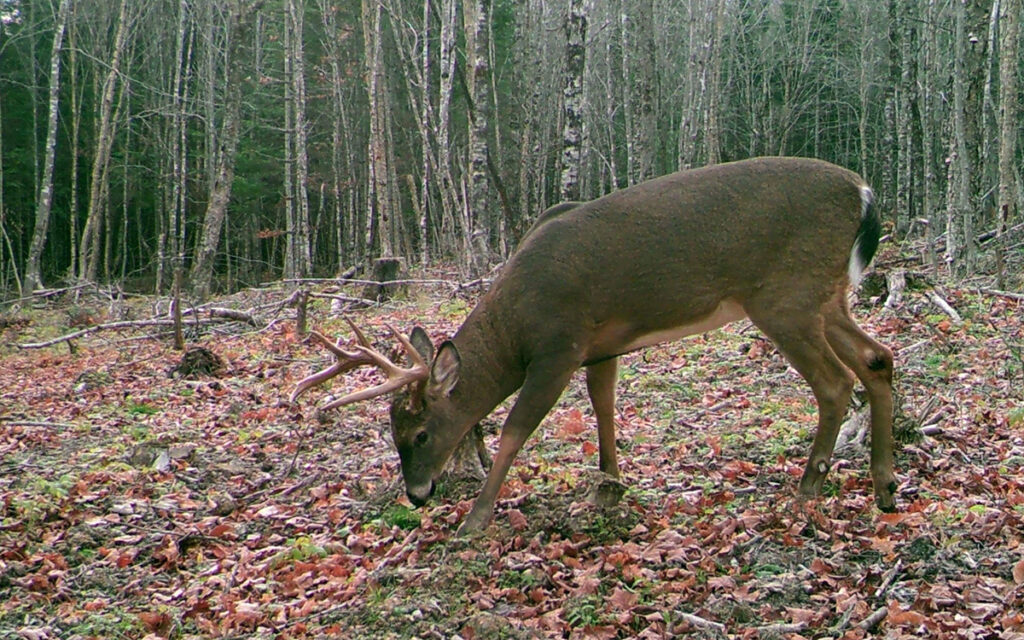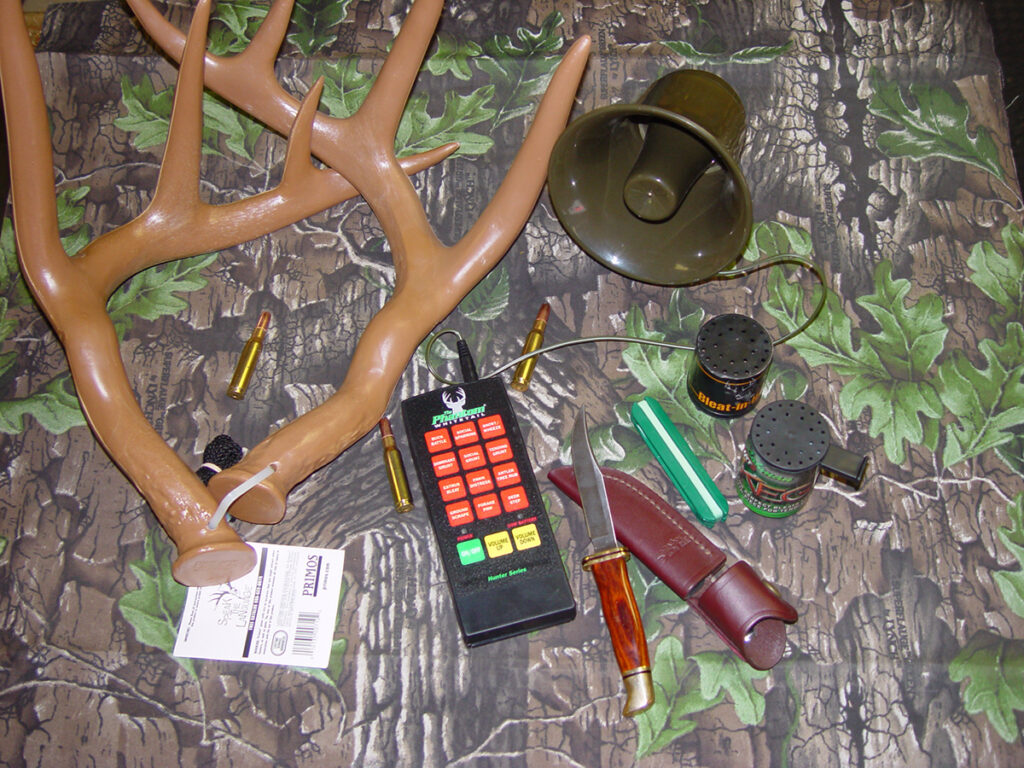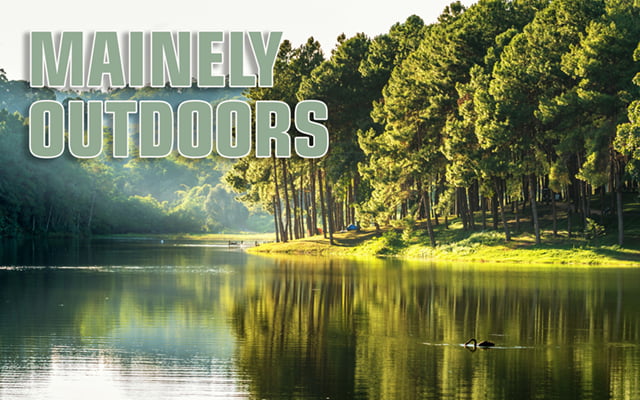Maine’s habitat of heavy forest, especially throughout Aroostook County, has dictated the most productive styles of deer hunting since the early 1900s. Our fathers and grandfathers put much needed venison in the ice box using walk and stalk tactics. The techniques of “still hunting”; slowly and quietly wandering the woods along obvious deer trails or finding and following a fresh set of tracks still works over a hundred years later.
Decades of heavy lumbering and the creation of thousands of new agri-fields all over the Crown of Maine have opened the door to other successful styles to bag a buck. Fifty years ago, sitting on a stump overlooking a fresh cut became popular. More recently however, erecting a tree stand or setting up a portable ground blind along the edge of often used game trails, feed fields, wild apple orchards and beech ridges and fresh scrapes and rubs are more popular,- and effective.

(Courtesy of Bill Graves)
The one characteristic all of these options require is silence. Hunters need to be hidden, motionless, scent free, patient and above all, QUIET! Well guess what. There’s a new game in The County, imported from out west, and it actually uses noise to bring deer to the hunter rather than the silent, sit and wait option. More and more whitetail enthusiasts are enjoying success rattling antlers to coax deer closer.
After years of trying to sneak up on a whitetail, now there are tactics to actually bring the deer to the hunter. Some of these techniques used attractant scents, but several other proven methods were based on sounding like a deer to coax real deer to investigate. Rattling anglers was the first such practice I was exposed to. A trick originated in Texas, where a set of horns are bashed and clashed together and on nearby brush to imitate a fight between two bucks, I had doubts it would work in Maine.
A friend took me out during archery season and eliminated my doubts the first morning. He banged the horns together, pawed the ground with them and rattled and shook the bushes with the horns on and off for 30 minutes. A fat, four pointer appeared soon after, well within rifle range but out of bow range. The deer watched and circled nervously while my partner kept rattling the antlers, but fear that a dominant buck was making the noise kept the younger buck out of arrow range. He finally scented us and bounded off, but during firearm season there would have been venison on the table.
During the rut, bucks become lovesick and somewhat less cautious, which sometimes works in the hunter’s favor. Seeking out a doe in heat keeps male whitetails on the move steadily and it becomes possible for hunters to stake out a rub, scrape or well-traveled trail to intercept amorous traveling bucks. Make a fake scrape or a drip site with one of the many effective doe estrous solutions and with a bit of breeze the males will come to you. Add the sound effects that a couple of other bucks are in the area fighting over a hot doe and any other nearby buck within hearing range will likely investigate.

(Courtesy of Bill Graves)
Antler rattling imitates sparring bucks and has been used for years out west, especially Texas, with consistent results. Over the last few decades Maine hunters have begun using the tactic during late November and been rewarded with some trophy deer. It’s a fairly simple technique, cut off a set of real antlers at the base, join them together with a rawhide thong for ease of transport and to prevent loss and take then to a tree stand or ground blind in good whitetail cover.
Once in place, grab the antlers by the bases, clash and smash the tines together loudly at intermittent periods for about five minutes. Wait a few minutes and repeat the fake antler dual, watch and listen for a horned interested interloper. One warning, wear gloves and pay attention to the antler position as you rattle, many a sport has scraped or gored their own hand when overzealous. Also have your rifle ready and near, on many occasions a buck will come running into sight ready to join the battle rather than sneaking around.
There are fake antlers, more lightweight and synthetic with even better sound quality than the real things for sale from several companies. Also effective and simple to use even one handed, are a couple of mechanical rattling when shaken, check out Bang Bag, Rattle Bag, and Battle Bag to name a few brands; They are inexpensive and effective. The height of the rut is a perfect time to attempt rattling up a buck, but this tactic will really work anytime during the season on many curious deer, and might even be worth a try in the upcoming muzzle loader season as well.
Times and tactics have changed in the regional deer woods, so with two weeks left to bag a buck it might be time to take some “sound” advice; make some noise. Since you can’t sound like a favorite food, the next best thing is to sound like another deer. With the rut in full swing, sounding like a buck ready to spar can be very productive. Silence isn’t always golden while deer hunting.








